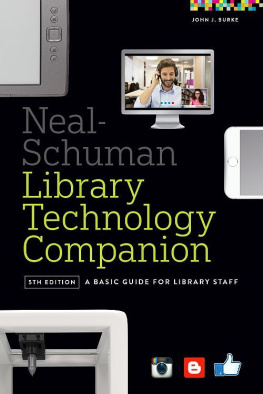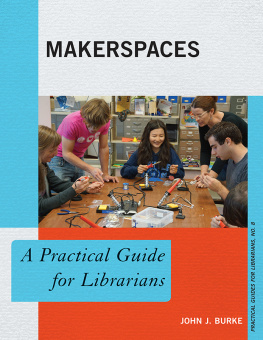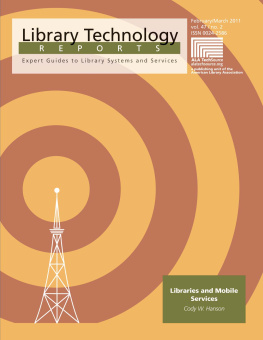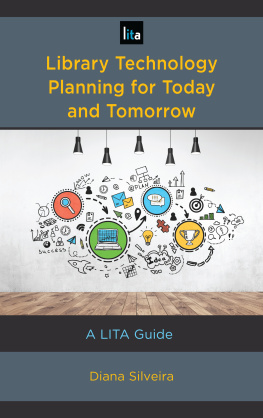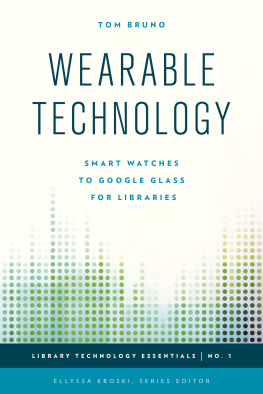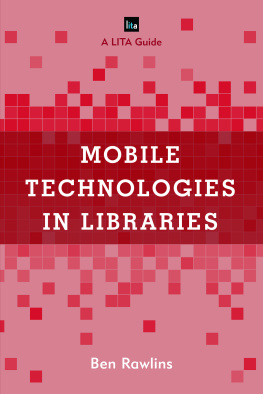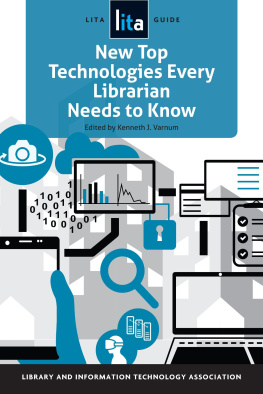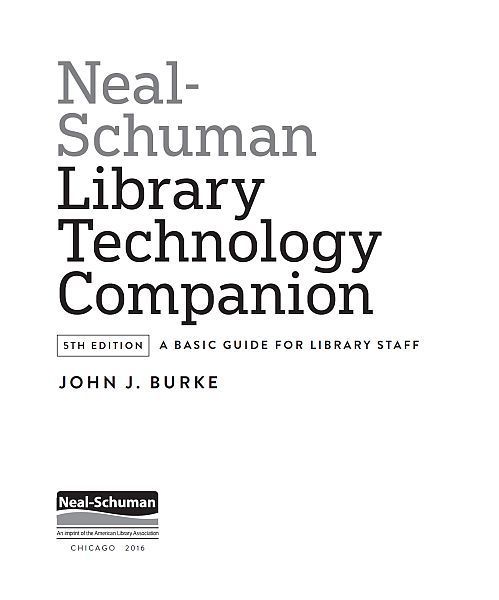John J. Burke - The Neal-Schuman Library Technology Companion: A Basic Guide for Library Staff
Here you can read online John J. Burke - The Neal-Schuman Library Technology Companion: A Basic Guide for Library Staff full text of the book (entire story) in english for free. Download pdf and epub, get meaning, cover and reviews about this ebook. year: 2016, publisher: American Library Association, genre: Home and family. Description of the work, (preface) as well as reviews are available. Best literature library LitArk.com created for fans of good reading and offers a wide selection of genres:
Romance novel
Science fiction
Adventure
Detective
Science
History
Home and family
Prose
Art
Politics
Computer
Non-fiction
Religion
Business
Children
Humor
Choose a favorite category and find really read worthwhile books. Enjoy immersion in the world of imagination, feel the emotions of the characters or learn something new for yourself, make an fascinating discovery.
- Book:The Neal-Schuman Library Technology Companion: A Basic Guide for Library Staff
- Author:
- Publisher:American Library Association
- Genre:
- Year:2016
- Rating:5 / 5
- Favourites:Add to favourites
- Your mark:
The Neal-Schuman Library Technology Companion: A Basic Guide for Library Staff: summary, description and annotation
We offer to read an annotation, description, summary or preface (depends on what the author of the book "The Neal-Schuman Library Technology Companion: A Basic Guide for Library Staff" wrote himself). If you haven't found the necessary information about the book — write in the comments, we will try to find it.
In its new fifth edition, which has been completely updated and reorganized, this one-stop overview of all technologies used in libraries today is more comprehensive and compelling than ever. The perfect primer for LIS students, Burkes guide should also be at the top of the list for any current or future library professional looking to stay at the forefront of technological advancement. It gives readers a sound and sensible way to consider, access, and use library technologies to better meet the needs of library users. Its incisive coverage includes complete analysis of the librarians technological toolbox for teaching, security, databases, and more; expert advice on how to compare and evaluate competing technology solutions; mobile devices and technology, social media, streaming media, and privacy; makerspaces and other technology programing; updated content on open source catalog systems, discovery layers, and related elements of library management systems; a new section on learning management systems (LMS); websites, web-based services, and free information resources; improved guidance on usability; new technology predictions for the future, with tips on how to stay up to date with the latest developments; and a glossary of useful terms. Informed by a large-scale survey of librarians across the spectrum of institution types, this guide will be a true technology companion to novices and seasoned LIS professionals alike.
John J. Burke: author's other books
Who wrote The Neal-Schuman Library Technology Companion: A Basic Guide for Library Staff? Find out the surname, the name of the author of the book and a list of all author's works by series.

